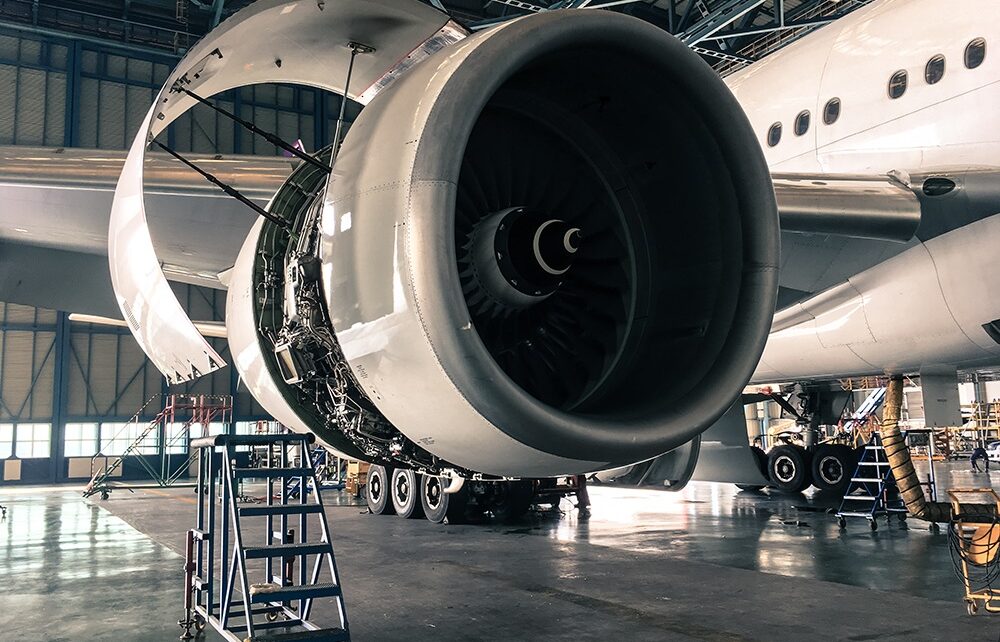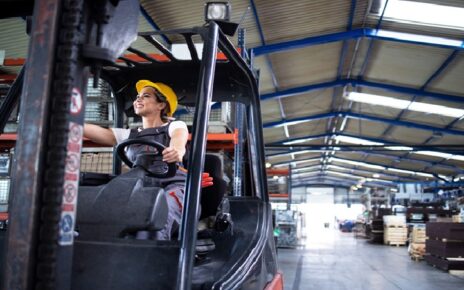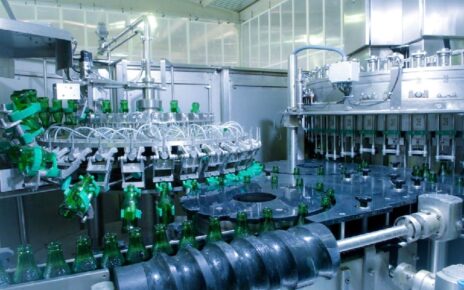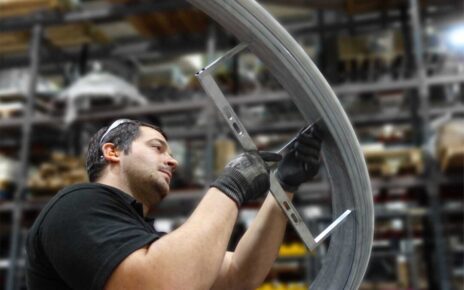Introduction to 4340M Forgings
4340M forgings are a type of high-strength alloy steel component that belongs to the 4340 steel family. These forgings are widely used in aerospace, automotive, and various industrial applications where exceptional strength, toughness, and durability are required. The “M” designation indicates that this alloy meets strict aerospace quality standards.
4340M forgings are produced through a forging process, which involves shaping the material while it’s in a solid state. This process enhances the material’s mechanical properties and ensures it meets specific industry requirements. These forgings are characterized by their excellent strength-to-weight ratio, making them suitable for critical aerospace components like landing gear, engine components, and structural parts.
Understanding the Chemistry of 4340M Alloy
The chemistry of 4340M alloy is critical to its exceptional mechanical properties. The typical chemical composition of 4340M alloy includes:
Carbon (C): Approximately 0.38-0.43%
Manganese (Mn): About 0.60-0.80%
Silicon (Si): Around 0.15-0.30%
Phosphorus (P): Maximum 0.035%
Sulfur (S): Maximum 0.040%
Nickel (Ni): Approximately 1.65-2.00%
Chromium (Cr): Approximately 0.70-0.90%
Molybdenum (Mo): Approximately 0.20-0.30%
Copper (Cu): Maximum 0.35%
These alloying elements serve specific functions:
Nickel and Chromium enhance hardenability and corrosion resistance.
Molybdenum contributes to improved strength and toughness.
Carbon enhances hardness and wear resistance.
Silicon and manganese aid in strength and structural integrity.
The careful balance of these elements results in a steel alloy with remarkable mechanical and metallurgical properties.
Key Mechanical Properties Beneficial to Aerospace
4340M forgings offer a range of mechanical properties that are highly beneficial in aerospace applications:
High Tensile Strength: 4340M steel typically offers a tensile strength in the range of 145,000 to 160,000 psi (pounds per square inch), depending on heat treatment. This high tensile strength ensures the structural integrity of aerospace components.
Exceptional Toughness: One of the standout features of 4340M is its exceptional impact toughness. It can withstand high-impact loads without fracturing, making it suitable for applications exposed to shock loading, such as aircraft landing gear.
Fatigue Resistance: The steel exhibits excellent fatigue resistance, making it suitable for components subjected to cyclic loading, like those in aircraft, which experience repeated stresses during takeoffs and landings.
Hardness: 4340M steel can be heat-treated to achieve various levels of hardness, enhancing its wear resistance and durability.
Corrosion Resistance: While not as corrosion-resistant as stainless steel, 4340M alloy still provides good corrosion resistance, particularly when compared to plain carbon steels.
Weldability: It is weldable, allowing for the fabrication of complex structures and assemblies in aerospace applications.
Heat Treatment Effects on 4340M Forgings
Heat treatment is a critical process in the production of 4340M forgings, as it significantly impacts their mechanical properties. The primary heat treatment process for 4340M forgings involves quenching and tempering:
Quenching: The forgings are heated to a high temperature, typically around 1,550-1,650°F (843-899°C), and then rapidly cooled (quenched) in oil or water. This rapid cooling hardens the steel, increasing its strength.
Tempering: After quenching, the forgings are reheated to a specific temperature (typically around 300-700°F or 149-371°C) and held at that temperature for a specified time. This tempering process reduces hardness to achieve the desired balance between hardness and toughness.
The choice of heat treatment parameters (temperature, time, cooling rate) can be tailored to meet the specific requirements of aerospace applications. Proper heat treatment is essential for achieving the desired combination of strength, toughness, and fatigue resistance, making 4340M forgings highly reliable components in the aerospace industry.
Corrosion Resistance: A Crucial Asset in Aerospace
Corrosion resistance is a critical attribute for materials used in aerospace applications due to the harsh operating conditions to which aircraft are exposed. While 4340M steel offers good corrosion resistance compared to plain carbon steels, it’s important to note that it is not as corrosion-resistant as certain stainless or superalloys. Nevertheless, 4340M’s corrosion resistance is often sufficient for many aerospace components, especially when properly protected with coatings, platings, or other corrosion prevention methods. Additionally, its excellent strength and toughness make it suitable for critical aerospace parts that require both corrosion resistance and structural integrity.
Fatigue Strength in High-stress Flight Environments
Aerospace components, particularly those in aircraft landing gear and structural elements, are subjected to cyclic loading and high-stress conditions during flight and landing. Fatigue strength is paramount in ensuring that these components maintain their structural integrity over the life of an aircraft. 4340M’s exceptional fatigue resistance makes it a preferred material for such applications. Its ability to withstand repeated stress cycles without experiencing fatigue failure is a key asset in ensuring the safety and reliability of aerospace systems.
Comparing 4340M to Other Aerospace Alloys
4340M steel competes with several other aerospace alloys, each with its unique properties and advantages. A comparison with some common aerospace alloys can help understand its positioning:
4340M vs. 4130 Steel: Both alloys are medium-carbon steels with similar alloying elements. However, 4340M offers higher strength and better fatigue resistance, making it preferable for more demanding aerospace applications.
4340M vs. 17-4 PH Stainless Steel: While 17-4 PH stainless steel offers excellent corrosion resistance, it usually falls short in terms of strength and fatigue resistance compared to 4340M. The choice between them depends on the specific requirements of the aerospace component.
4340M vs. Titanium Alloys: Titanium alloys are known for their exceptional strength-to-weight ratio and corrosion resistance. Titanium may be favored in applications where weight savings are critical, but 4340M remains a strong competitor due to its cost-effectiveness and high strength.
4340M vs. Inconel Alloys: Inconel alloys are superalloys known for their high-temperature strength and corrosion resistance. Inconel is often used in aerospace applications that involve extreme temperatures, whereas 4340M is chosen for its balance of strength and toughness in lower-temperature environments.
The selection of the appropriate alloy depends on factors such as the specific aerospace application, required mechanical properties, operating conditions, and cost considerations.
Applications: Where 4340M Shines in Aircraft Design
4340M steel plays a crucial role in various aircraft components and systems due to its unique combination of properties:
Aircraft Landing Gear: Landing gear components, such as struts, axles, and gear beams, are commonly made from 4340M steel due to its high strength, toughness, and fatigue resistance, which ensure safe landings even under high loads.
Engine Components: Some engine parts, like crankshafts, connecting rods, and gears, benefit from 4340M’s robust mechanical properties, particularly in high-performance and military aircraft.
Structural Elements: In aircraft design, 4340M is used for various structural elements that require a balance of strength, toughness, and weight considerations, such as wing spars, ribs, and fuselage components.
Transmission Systems: Helicopter transmissions and drive systems rely on 4340M steel for its ability to handle the stresses associated with rotor and propulsion systems.
Fasteners: 4340M is used for aerospace fasteners like bolts, nuts, and screws, ensuring the structural integrity of critical connections.
In each of these applications, 4340M steel’s mechanical properties make it a reliable and durable choice, contributing to the overall safety and performance of the aircraft. Its versatility and cost-effectiveness continue to make it a preferred material in the aerospace industry.
Challenges and Solutions in Machining 4340M
Machining 4340M steel, while rewarding due to its excellent mechanical properties, can present some challenges:
Hardness: 4340M steel is often heat-treated to achieve high hardness, making it tougher to machine. This requires specialized tooling with the right cutting speeds, feeds, and tool materials to avoid excessive tool wear.
Residual Stresses: During machining, residual stresses can develop in the material, affecting its dimensional stability. Proper techniques, like stress relieving or minimizing material removal, can help mitigate these issues.
Heat Generation: The high-speed machining of 4340M can generate significant heat, potentially causing thermal distortion or affecting the material’s properties. Effective cooling methods are essential.
Tool Life: Due to its hardness, machining 4340M can reduce tool life. Carbide or high-speed steel tools, along with optimal machining parameters, are used to extend tool life.
Surface Finish: Achieving the desired surface finish can be challenging. Secondary processes like grinding or polishing may be necessary for critical components.
Solutions to these challenges involve the use of advanced machining techniques, specialized tooling, precise process control, and stringent quality checks to ensure the final product meets aerospace standards.
The Role of 4340M in Modern Aerospace Innovations
4340M forgings continue to play a significant role in modern aerospace innovations:
Advanced Materials: In the pursuit of lightweight and high-performance materials, 4340M’s exceptional strength-to-weight ratio remains attractive. Innovations in alloy design and heat treatment techniques have further expanded its capabilities.
Additive Manufacturing: 4340M is being explored for additive manufacturing (3D printing) applications, allowing for complex and lightweight designs that were previously challenging to achieve with traditional manufacturing methods.
Sustainability: Sustainability is a growing concern in aerospace. 4340M’s durability and ability to withstand high-stress environments contribute to the longevity and reliability of aircraft, reducing the need for frequent replacements and associated resource consumption.
Hybrid Structures: Modern aircraft designs often incorporate hybrid structures that combine different materials for optimal performance. 4340M’s compatibility with various materials makes it valuable in these applications.
Customization: Advances in alloy customization enable aerospace engineers to tailor 4340M’s properties to specific component requirements, ensuring optimal performance and safety.
Conclusion: The Future of 4340M Forgings in Aerospace
The future of 4340M forgings in aerospace looks promising, driven by ongoing advancements in alloy design, manufacturing techniques, and innovative applications. As aerospace technology continues to evolve, the demand for materials that can withstand extreme conditions, offer customization options, and contribute to sustainability will persist.
4340M’s exceptional mechanical properties, including high strength, toughness, and fatigue resistance, position it as a reliable choice for critical aerospace components. Collaboration between material scientists, engineers, and manufacturers will likely lead to further innovations and enhancements in the use of 4340M in aerospace, ensuring its continued role in the industry’s evolution and future success.





